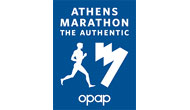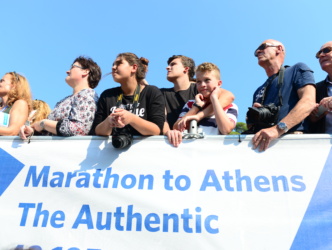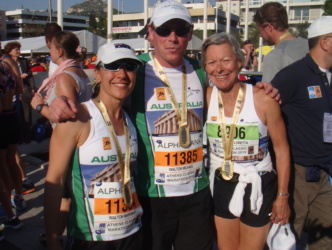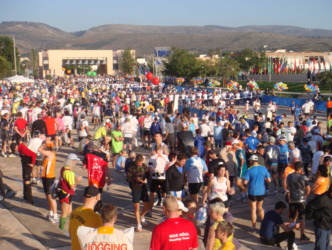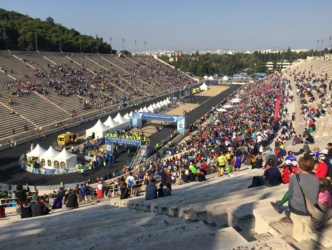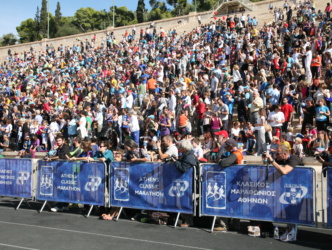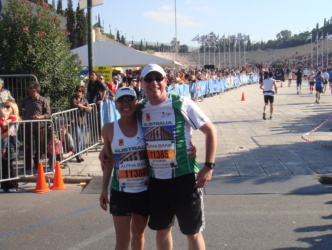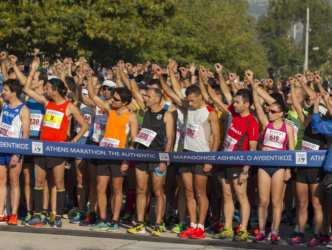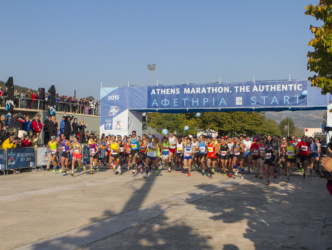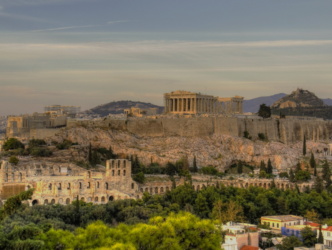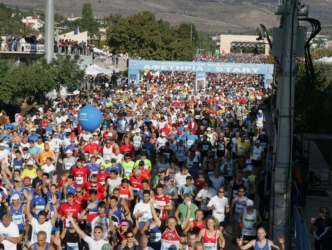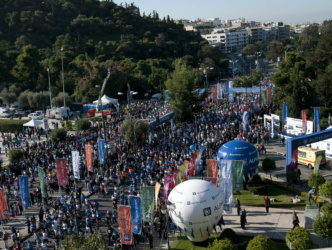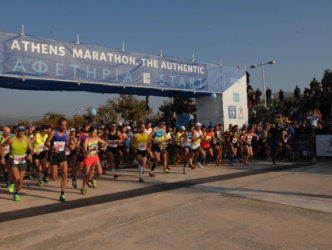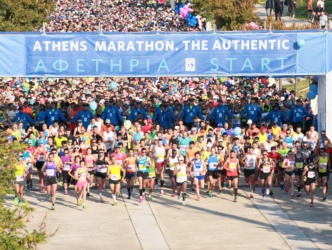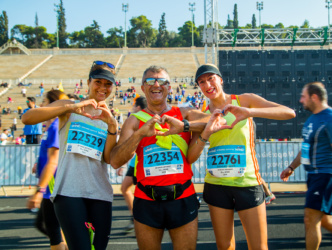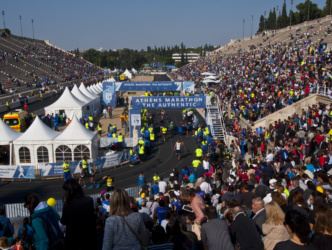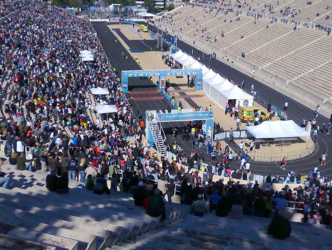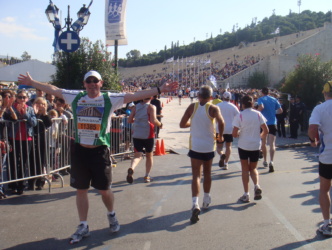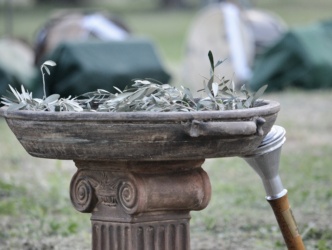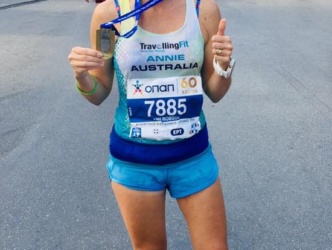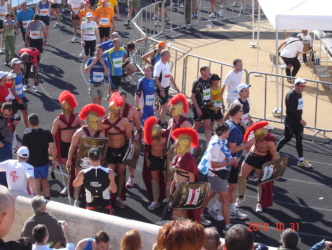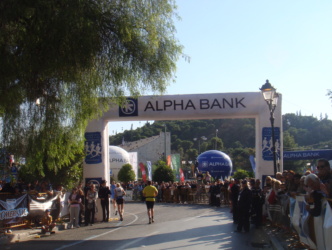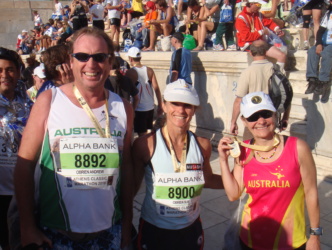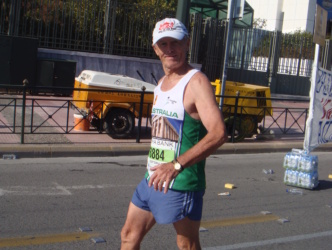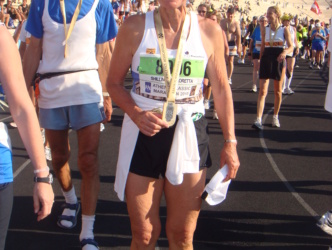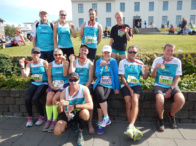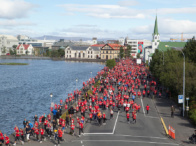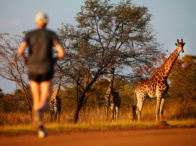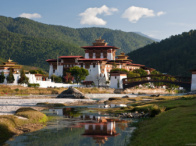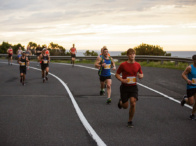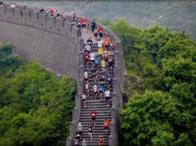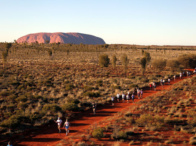WELCOME TO ATHENS
The Athens Marathon, the Authentic, celebrates Pheidippides run from Marathon to Athens, which went down in history and gave its name to the race and distance we now know as the Marathon. With thousands of years of history and mythology, Athens is the birthplace of the ancient and modern Olympic Games.
We are delighted to say that Travelling Fit has been taking people to this event for 18 years. We have a 5 Day/4 Night package which includes the best of Athens and our 7 Day / 6 Night package lets you explore further into the wonders of Ancient Greece.
You can also take advantage of booking one of our exciting Optional Tours to complete your travels, they include:
- Half day Cape Sounion Tour
- Full day Cruise to 3 Islands of Hydra, Poros and Aegina
- Full day Argolis Tour visiting Corinth, Mycenae, Nafplion and Epidaurus
- Full day Delphi Tour
Travelling Fit is the Official Australian Travel Partner for the Athens Marathon, the Authentic

- Packages Include
- ALL PACKAGES INCLUDE:
- Guaranteed Race Entry (Runners Only)
- Buffet breakfast daily
- Escorted coach transfer to race start (runners only)
- Assistance by English Speaking ground staff
- Personalised Travelling Fit Running Top
exclusive to Travelling Fit clients - Invite to Travelling Fit’s Athens Marathon Closed Facebook Group
exclusive to Travelling Fit clients - Delivery of Marathon Race Pack to your hotel including goodie bag and official race T-shirt
- 24/7 help desk during your stay
- VAT Tax
- 5 Day / 4 Night Package also includes
- 4 Nights’ Accommodation:
Check in: Thu 07 Nov | Check out: Mon 11 Nov 2024 - Return airport transfers
- Half Day Athens City coach sightseeing tour
- 4 Nights’ Accommodation:
- 7 Day / 6 Night Package also includes
- 6 Nights’ Accommodation:
* Check in: Fri 08 Nov | Check out: Mon 11 Nov 2024
* Classical Tour of Greece: Check in: Mon 11 Nov | Check out: Thu 14 Nov 2024 - Arrival transfer from airport to hotel
- 3 x Dinners whilst on the Classical Tour (Mon/Tue/Wed)
- English Speaking licensed guide whilst on the Classical Tour
- All entrance fees associated with the Classical Tour
- 6 Nights’ Accommodation:
PACKAGE FLYERS
PACKAGE PRICES
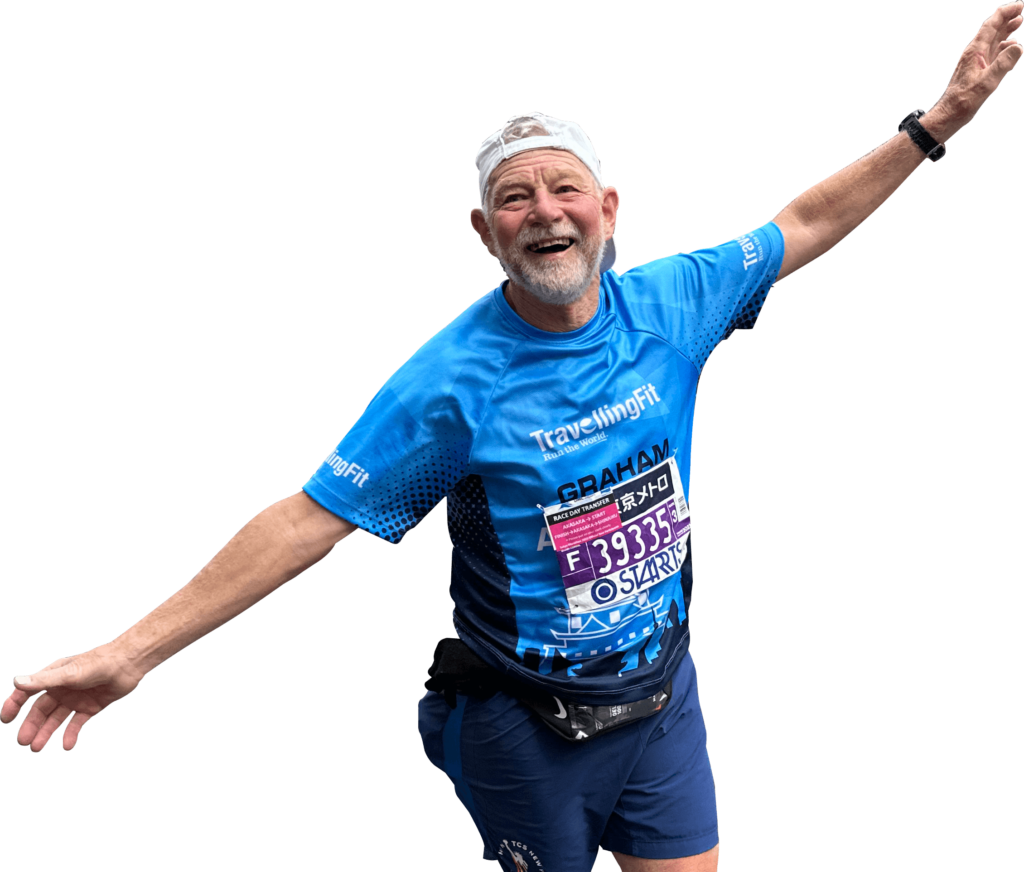
The Course
Run in the footsteps of Pheidipides, the legendary Athenian soldier that ran from the battlefield of Marathon to the city of Athens in full battle gear in 490BC to announce the victory of the Athenians. This event went down in history and gave its name to the race and distance we now know as the Marathon.
The first 4 kilometers are downhill, leading runners away from Marathon itself. The runners run along the Marathonos Avenue up to the 4km marker where they turn left and enter the Marathonomachon Str and area of the Marathon Tomb (War Memorial). The course follows a rather circular route around the War Memorial for the next 2.2km.
The course becomes flat between the 6km and 10km points (Nea Makri), but from the 11km to 17km the course undulates uphill, followed by a steep descent to Rafina Junction. Starting from the Rafina Junction, the course goes uphill again, with the most difficult part is found up to the 20km mark.
Runners pass along the district of Pikermi and through the city of Pallini (27km – 28km) continuing the ascent to Gerakas and Stavros Junction (30km – 31km). This steep ascent is followed by a steep descent leading to the Agia Paraskevi Square. Then, the runners follow the Mesogeion Avenue, going through the districts of Chalandri and Cholargos, meeting flat and downhill parts of the course all the way to the finish. The most characteristic downhill part is the one that starts form the Ministry of National Defense and finishes at the Katechaki Junction (37.5km).
Right after the Erricos Dynnan Hospital, the runners continue left on Michalakopoulou Avenue until the traffic lights at Michalakopoulou and Pheidippidou crossroads. They continue running on Pheidippidou Street until the crossroads at Kiffisias & Alexandras Avenue. After turning left on Vas. Sofias Avenue the runners pass by the American Embassy, the Athens Music Hall and the Park of Liberty (40km), where the last feed zone is located. As they reach the Hilton Hotel, they slightly turn right heading towards the Syntagma Square, passing by the Evaggelismos Hospital and the War Museum.
It is here that, all of a sudden, runners make eye contact with the Panathenaic Stadium, passing by the Presidential Residency and the National Gardens. Only a few meters remain in order for the runners to enter the Stadium and run the last meters inside it, before reaching the finish line.
At Travelling Fit we have personally run the Athens Marathon, the Authentic, and we would be more than happy to share our experiences of this wonderful event with you.
Testimonials
Race Information
Entry Fees
The entry fee to the Athens Marathon, the Authentic, is incorporated into the price of your package.
Qualifying Times
There are no qualifying times to the Athens Marathon, the Authentic.
Note that all athletes must be at least 18 years of age on race day
Start Time
A “Wave Start System” will be implemented. Twelve (12) different wave starts are planned with an additional one for runners with disabilities, with the first wave for the elite runners leaving at 9:00am. Subsequent waves will leave every 2-6 minutes.
Runners will be allocated in the starting blocks according to their previous best finishing time over the last 3 years, as stated on their entry form and checked by the SEGAS Marathon Office. Runners who have not stated their best finish time on their entry form will be placed in one of the last three blocks.
Cut-Off Times
The time limit to finish the Marathon Race is set to 8 hours (including power walking). The event will close at 17.42 to allow for time delay of all consecutive starts.
Runners who continue running beyond the time frames provided may go on AT THEIR OWN RISK.
No participant in the Power Walking is allowed to finish his/her race before 5 hours.
Race Timing
All runners are obligated to bear the bib number with the timing chip on the front of their chest and not to cover it with any clothing or object.
Split timing zones are installed at every 5 kilometres and at 21.1km. Any runner for whom no time is shown at the Start, the split timing zones and the Finish, will be disqualified.
Only athletes who:
- participate in accordance to the rules,
- are placed in the right starting block,
- have timing indications at the Start, all split timing zones and the Finish, and
- complete the race within the time limit (8 hours)
will have their final and split times appearing in the Official Results and get a participation certificate.
Race Packets
When purchasing a Marathon Package through Travelling Fit, runners will have their race packs, including timing chip and bib numbers, delivered to their hotel.
Pace Setters
There are no official pace setters in the Athens Marathon, the Authentic.
Aid Stations
Fifteen (15) support stations will operate along the Marathon Course from the 5th to the 40th km.
- Bottled water will be offered at the start and the finish as well as at every 2.5km after the 5km.
- Isotonic drinks will be offered at the 10km aid station and at every second aid station through to the 40km aid station and the finish area.
- Energy Gels will be available at the 10km and 20km aid stations.
- Bananas will be available at the 20km, 25km and 30km, and 35km aid stations, as well as the finish area.
- Energy bars and crackers will be available at the 25km and 35km aid stations.
- Coca Cola will be available at the 30km, 35km, and 40km aid stations.
Personal Refreshments and Clothing
All participants need to put their clothes and other personal belongings in the kit plastic bag they have been given along with their race pack.
All kit bags need to have on them the sticker with the runner’s bib number. All bags should be well closed. Please make sure that your kit bag does not contain any travel documents, jewelry, money or medicines. The Athens Marathon Organising Committee bears no responsibility in case of loss or damage of any valuable items in the kit bags.
No other bags, backpacks, etc, than the kit bags provided to the runners by the Organising Committee will be accepted.
Runners must give the kit plastic bag with their personal belongings and clothes to the volunteers at the transportation trucks located 100m before the Start Arch (traffic lights), no later than 40 minutes before the start of the race (8:20 the latest), in order to be taken to the Panathenaic Stadium. Volunteers will be there to assist the runners, while there will be signs indicating the area that corresponds to their own bib number.
Note: No personal drinks are able to be left at the drink stations
TRANSPORT
Transport to the race start is included in the overall price of your package. Buses will depart from, or near your hotel.
Expo
NOTE: The below information is to be confirmed.
The ERGO Marathon EXPO will take place at the Faliro Indoor Hall & Exhibition Centre (TaeKwonDo Venue at P. Faliro)
The opening dates and times are:
- Wednesday 06 November: 13.00h – 20.00h
- Thursday 07 November: 10.00h – 20.00h
- Friday 08 November: 10.00h – 20.00h
- Saturday 09 November: 10.00h – 18.00h
When purchasing a Marathon Package through Travelling Fit, runners will have their race packs, including timing chip and bib numbers, delivered to their hotel. Therefore there is no need to attend the expo if you don’t want to.
Finishes T-Shirts, Medals and Certificates
All entrants will receive a race t-shirt and every finisher who makes the cut off time will receive a commemorative medal and a finishers certificate.
Weather Conditions
The average Athens temperature for the month of November is 16 degrees Celsius (61 degrees Fahrenheit).
Others Events
- Marathon Race Power Walking
- 10km Road Race
- 5km Road Race


